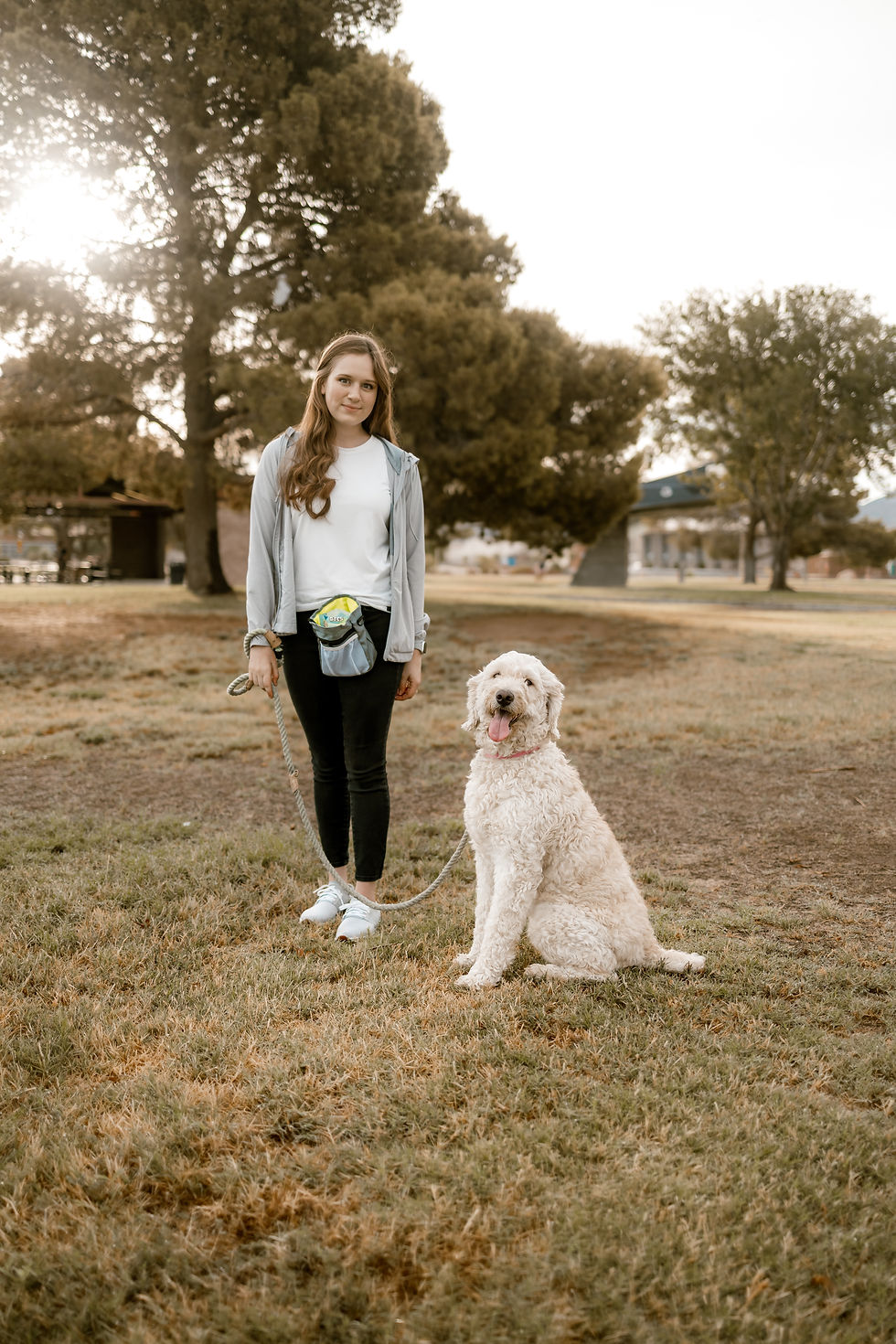LIMA (no, not the bean) Dog Training
- Megan Crow

- May 17, 2022
- 3 min read
Least Intrusive, Minimally Aversive. A humane dog training strategy I live by.

What is LIMA?
Per the International Association of Animal Behavior Consultants, LIMA means “Least Intrusive, Minimally Aversive” It is a strategy used by animal trainers or behavior specialists who want to be effective and humane at the same time. A professional using LIMA strategies must be adequately competent and educated enough in order to ensure their method is the least intrusive and aversive (aversive meaning to cause fear or pain).
A dog trainer who says they are positive reinforcement based should always strive to achieve training goals using this method. In the overwhelming majority of training instances, results can be achieved without using intrusive and painful methods. Counterconditioning, desensitization, and reinforcing an incompatible behavior with the undesired behavior are all efficient and effective ways to train humanely.
It’s important to note that in the case of dog training, it is the DOG who decides what is intrusive or aversive. The mark of a good trainer is the ability to distinguish those differences between dogs. A great example of this is the use of clickers. Clickers are tools used to “mark” or communicate the exact moment your dog does something you want to reinforce and a great way to get more efficient with dog training. An inexperienced trainer who says they are “Positive Reinforcement Only” but not well versed in LIMA strategies might think a clicker is acceptable for every dog. When presented with a timid dog who flinches and runs away from the sharp sound of a clicker, then what? That clicker is now considered aversive in that particular dog’s mind. A LIMA educated trainer will see this and change their training strategy, whether it involves using a pen to “click” or simply resorting back to simple verbal cues to mark a behavior.
Once certain least intrusive and aversive training methods and strategies have been exhausted, that is the only acceptable time to move to more intrusive methods. “Least Intrusive” can also mean avoiding positive training methods like counterconditioning and desensitization. The point is to achieve the training goal the most efficiently AND humanely. For a relatively tame example, imagine a dog who is constantly digging in the trash can. Now, we could spend hours and hours and months trying to teach the dog to control his impulses and never investigate the trash can (which goes completely against a dog’s biological urge to scavenge), or we could simply put the trash can in a cabinet. Which is the easiest and least intrusive way to accomplish the goal of the dog not going in the trash?
The hierarchy of humane and effective practice is a wonderful guide for ensuring you are following the LIMA methods for behavioral change.

Our trash can example solution would be “exit 2” barring no issues from a wellness perspective. Did we ensure the dog is fed enough? Is the dog suffering from any other nutritional or mental enrichment deficiencies leading them to scavenge? Scavenging is a natural dog behavior they will perform regardless if there is a proper outlet for them or not (and to them, the trash can is PERFECTLY proper for that!).
Trainers should always ensure behavioral problems weren’t stemming from pain or illness before starting any training plan. It wouldn’t make much sense to start an intensive training strategy for a dog who snapped at a hand when they had a very painful lump under their skin, or a thorn in a paw.
Finally, LIMA based trainers should only be using methods for which there is a scientific basis of success (evidence-based treatments). Simple effectiveness is not acceptable for choosing a method. Sure, a shock collar may temporarily get the result one was looking for, but it does not address any underlying issues or causes.
Sources
What’s Wrong With This Picture? Effectiveness Is Not Enough
Susan G. Friedman, Ph. D. Department of Psychology Utah State University, Logan, UT
IAABC Hierarchy of Procedures for Humane and Effective Practice
IAABC Statement on LIMA




Comments